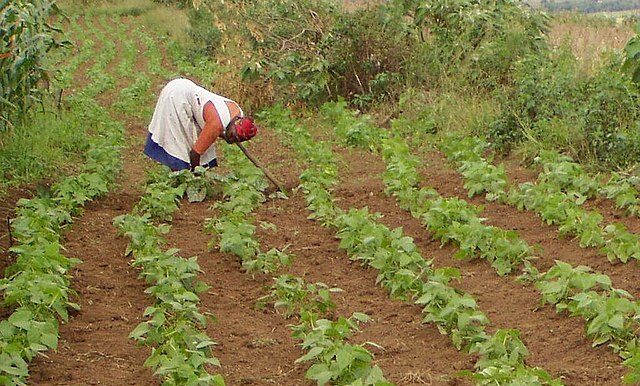Southern Africa’s agricultural landscape is well populated with smallholder farmers, namely individuals tilling less than ten hectares of land, striving to make a living while contributing to subsistence and commercial markets.
Resilient smallholder farming communities form part of the backbone of agriculture in their respective countries, contributing significantly to food security and rural livelihoods.
That’s the finding of a study undertaken by agricultural mentors Regenz, which additionally uncovered how many of the problems encountered by smallholders in the different countries are, in fact, the same.
This vital sector is crucial for inclusive growth, but the challenges faced by smallholder farmers demand attention and strategic solutions, says Regenz.
Barriers to growth for smallholder farmers
While smallholder farmers actively participate in farming various crops and livestock, the barriers to their growth are significant:
- Farmers grapple with production and marketing challenges
- Limited access to resources for on-farm infrastructure, equipment, and inputs hinders their ability to fully utilise their land and expand production.
- The impact of climate change amplifies these challenges, necessitating investments in on-farm infrastructure and regenerative farming techniques to ensure quality production and a consistent supply.
At the marketing level, smallholder farmers face hurdles in accessing reliable routes to markets. Whether through informal markets, local supermarkets, fresh produce markets, or corporate clients, the main challenge remains low prices and high fluctuations. This creates a vicious cycle, restraining smallholder farmers in unprofitable and unsustainable practices.
Despite widespread entry into vegetable production, smallholder farmers predominantly grow low-value vegetables, such as spinach, kale, cabbages, carrots, and butternuts. These crops, considered easier and less expensive to grow, have experienced significant declines in real average prices since 2009. This lack of profitability is exacerbated by the farmers’ limited access to resources for productive infrastructure and inputs, hindering their capacity to capitalise on market opportunities.
Then there is the issue of access to seed. The commercial sector faces no real challenges in accessing quality seeds (even if these are genetically modified varieties – Ed) due to effective collaboration between the government, regulatory authorities, and the commercial sector. However, in the subsistence sector, the lack of investment in breeding programmes creates challenges in accessing improved seed varieties. Bridging the gap between science and farming requires differentiation of seed varieties for different market segments, improved data accessibility, and a focus on breeding for local contexts, Regenz believes.
Policy initiatives: turning plans into action
South Africa’s Agriculture and Agro-processing Master Plan (AAMP) and the Competition Commission’s National Fresh Produce Market Inquiry are critical policy initiatives aimed at increasing the contribution of smallholder farmers. However, the success of these plans hinges on their effective implementation. While the AAMP aims to boost the share of small-scale vegetable producers, it requires a holistic support package covering funding, skills, infrastructure, inputs, and market access.
Moreover, as agricultural economist Wandile Sihlobo points out, its implementation is proceeding painfully slowly.
Across the continent, streamlining government funding processes and providing assistance in filling out application forms can enhance smallholder farmers’ chances of accessing much-needed funds, says Regenz. The focus should be on turning policy rhetoric into tangible support for those on the frontlines of agriculture.
Regional perspectives: challenges and opportunities
Here, then are Regenz’ findings in a nutshell.

Namibia
- No of smallholder farmers: 70 000
- Main crops: Maize, wheat, millet
- Limitations:
- Limited access to credit and modern farming technologies
- Erratic rainfall patterns
- Land tenure issue
Botswana
- No of smallholder farmers: 54 908
- Main crops: Sorghum, maize, millet
- Annual cereal production: 200 000 tons (only about 17% of domestic consumption)
- Limitations:
- Limited access to markets
- Water scarcity
- The need for improved agricultural extension services
Zimbabwe
- No of smallholder farmers: 1.5 million
- Main crops: Maize, tobacco, and cotton
- Limitations:
- Land tenure issues
- Political instability
- Limited access to credit and inputs
- Occasional droughts
Zambia
- No of smallholder farmers: 1.5 million
- Main crops: Maize, sorghum, millet
- Arable land under cultivation: 17%
- Limitations:
- Inadequate infrastructure
- Limited access to markets
- Variability in rainfall patterns
Mozambique
- No of smallholder farmers: 3.2 million
- Main crops: Cassava, maize, rice
- Smallholder farmer production: 95% of the country’s agricultural production
- Limitations:
- Limited access to credit and markets
- Post-harvest losses
- Low use of improved inputs
- Vulnerability to extreme weather events
Lesotho
- No of smallholder farmers: 690 000
- Main crops: Maize, sorghum, and wheat
- Limitations:
- Limited arable land
- Vulnerability to soil erosion
- Water scarcity
Malawi
- No of smallholder farmers: 3.1 million
- Average farm size: 0,7ha
- Main crops: Maize, tobacco, tea
- Limitations:
- Dependency on rain-fed agriculture
- Limited access to modern inputs
- Vulnerability to climate change impacts
South Africa
- No of smallholder farmers: 2.5 million
- Main crops: Maize, potatoes, sugarcane
- Limitations:
- Access to markets and resources
- Access to basic services
- Inconsistent policy enforcement
- Low capacity and knowledge-sharing
- Climate variability and change
In conclusion, the state of smallholder farmers in Southern Africa demands comprehensive, coordinated efforts. Government initiatives need to translate into actionable support, addressing the financial, infrastructural, and market access challenges faced by these resilient farmers. Bridging the gap in seed access and prioritising regional-specific challenges can pave the way for sustainable growth, ensuring smallholder farmers become key contributors to the broader agricultural sector.
To learn more about RegenZ’s Smallholder Farmer Package simply click on the link or go to www.regenz.co.za.
Main image: A smallholder farmer in KwaZulu-Natal hoes her bean field by hand. Picture ex Wikimedia Commons by Alandmason.
To read other articles about smallholder farming click here.

